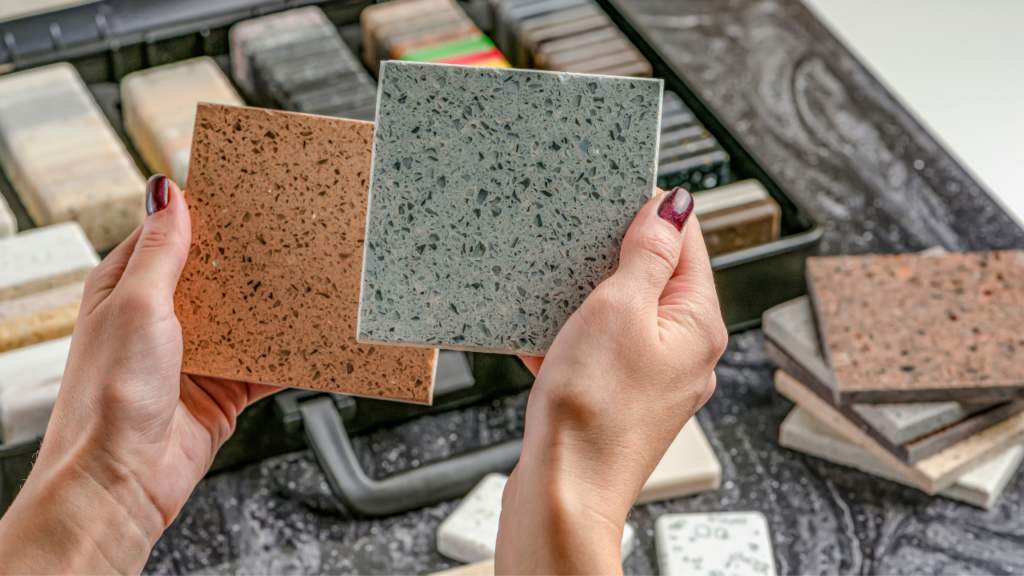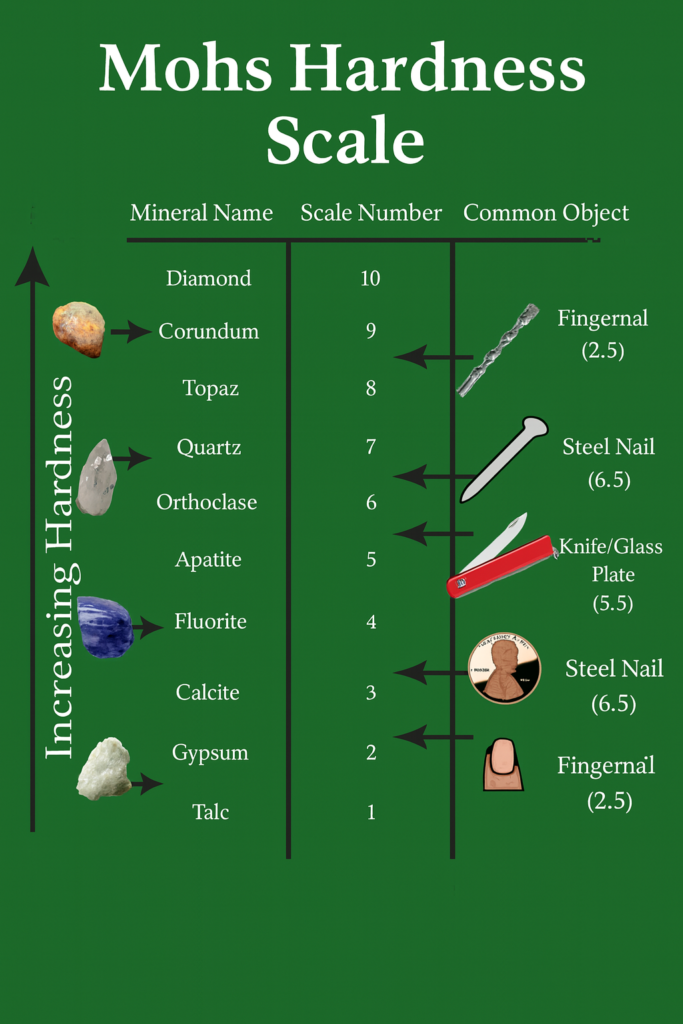Pick Your Stone Wisely: Understanding the Mohs Scale of Hardness

Pick Your Stone Wisely: Understanding the Mohs Scale of Hardness
Whether you’re choosing a kitchen countertop, bathroom floor, or even a gemstone for a custom piece of jewelry, one of the most overlooked but essential considerations is hardness. Every decorative stone used in residential construction—and every precious and semi-precious gemstone—is rated on a universal system called the Mohs Scale of Hardness. Understanding this scale can help you make informed decisions and set realistic expectations for care and maintenance.

What Is the Mohs Scale?
The Mohs Scale of Hardness ranks minerals from 1 to 10 based on their ability to resist scratching. Talc is the softest at 1, and diamond is the hardest at 10. The higher the number, the more scratch-resistant the material.
This is not just academic—hardness affects everything from how often you’ll need to maintain your stone to whether certain repairs are even possible.

Softer Decorative Stones (Mohs 3–4)
These stones are popular for their beauty and warmth, but they require more frequent care and gentle use.
● Marble (Mohs 3–4): Classic and elegant, but easily scratched and etched by acids or abrasives.
● Limestone (Mohs 3–4): Earthy and natural, but highly porous and soft. ● Travertine (Mohs 3–4): Loved for its textured, rustic appearance, but needs sealing and extra care.
● Soft Slates (Mohs 2.5–4): While beautiful, some slates can flake or scratch more easily than expected.
These stones have slightly less hardness than nephrite jade or opal—both of which are considered soft gemstones requiring delicate handling.
Medium-Hard Stones (Mohs 4–6)
These options offer a bit more resilience while still retaining some of the natural softness of earlier materials.
● Hard Slates (Mohs 5–6): Denser and more durable than their softer counterparts. ● Dolomitic Marble (Mohs 4–5): A variation of marble with a slightly harder composition, offering improved resistance to etching.
These stones are in the same general hardness range as turquoise, fluorite, and some tourmaline gems—semi-precious, beautiful, but not impervious to scratching.
Harder Stones (Mohs 6–8)
These stones offer excellent durability and are well suited for high-traffic areas and daily use.
● Quartzite (Mohs 7): Often confused with quartz or marble, this stone is extremely hard and highly resistant to scratches.
● Granite (Mohs 6–7): One of the most durable decorative stones, it’s widely used in kitchens and high-traffic floors.
Granite falls just under topaz (Mohs 8) and sapphire (Mohs 9) on the Mohs scale. Interestingly, sapphire is used in high-end watch faces for its near-diamond hardness and scratch resistance—making the comparison to granite both relevant and striking.
The Trade-Off: Maintenance vs. Repairability
Here’s the irony:
● Softer stones may need more frequent maintenance (cleaning, sealing, polishing), but they’re often easier to repair and restore.
● Harder stones are more resistant to damage, but when they do chip or develop flaws, repairs are more difficult and costly. Surface refinishing often requires industrial tools or may not be possible at all.
Gemstone Parallels
Understanding the Mohs scale can also help homeowners better relate to their stone surfaces by comparing them to familiar gemstones:
● Marble and Opal: Both sit around Mohs 3–4. Would you drag metal furniture across an opal?
● Granite and Quartz: Quartz is a component of granite and also a popular gemstone at Mohs 7.
● Topaz and Tourmaline: These semi-precious stones match granite’s range of hardness—durable, but not indestructible.
Smart Use Starts with Smart Choices
Once you understand the hardness of the stone you’re working with, you can make practical decisions to preserve its beauty:
● Use protective pads under chairs and tables if you have marble or travertine floors. ● Choose cutting boards and avoid dragging cookware across soft stone countertops. ● Seal porous stones regularly to minimize stain absorption and etching. ● Avoid acidic or abrasive cleaners, especially on low-Mohs stones.
● Communicate your expectations to your installer or cleaning professional—what you expect from the surface may not match what the stone can deliver without help.
Final Thought
Not all stones are created equal—and that’s part of what makes them so special. But beauty without understanding can lead to frustration. By learning the Mohs scale and applying simple precautions, you can enjoy the aesthetic and functional benefits of your chosen stone for decades.

Leave Comment